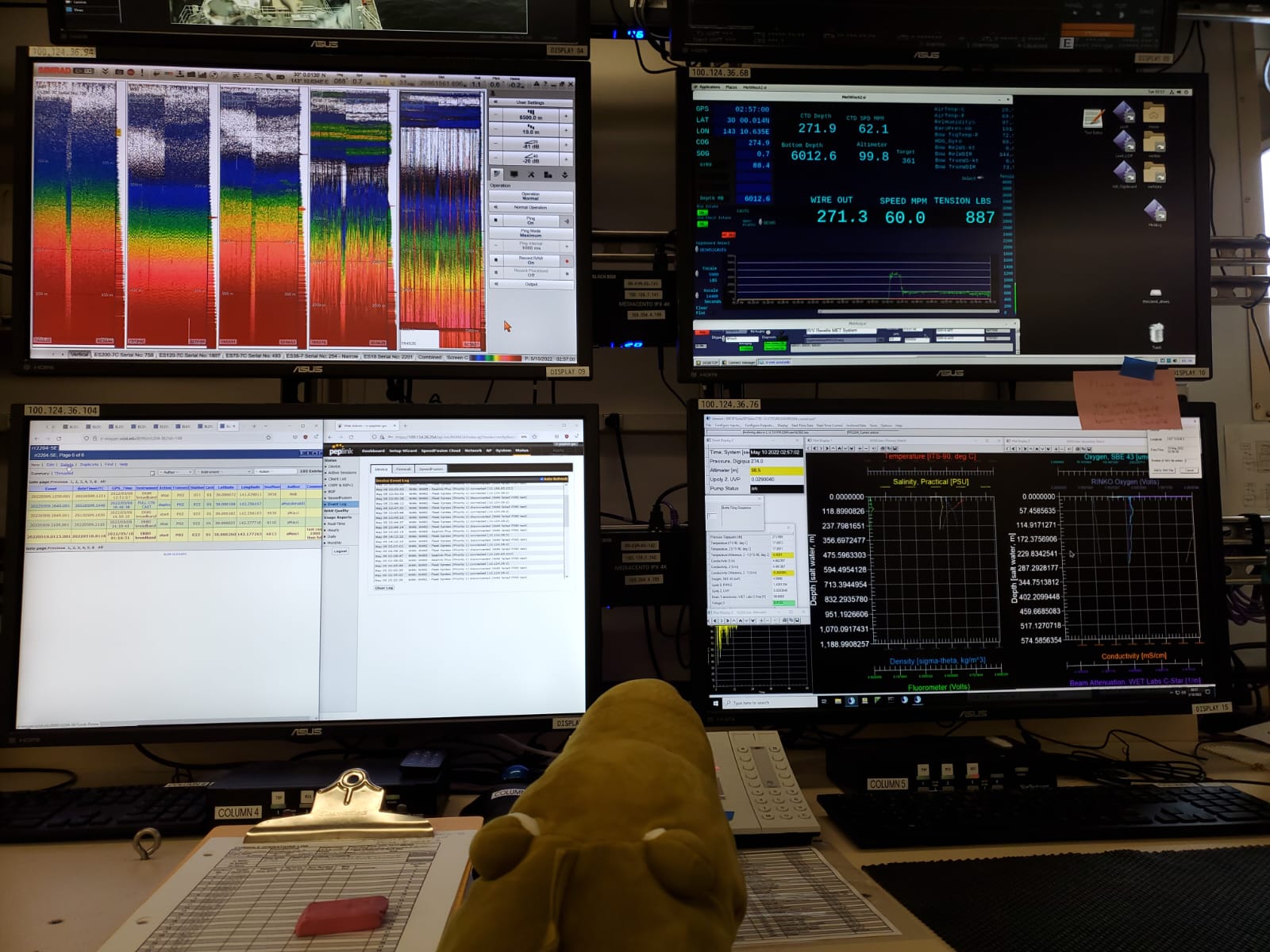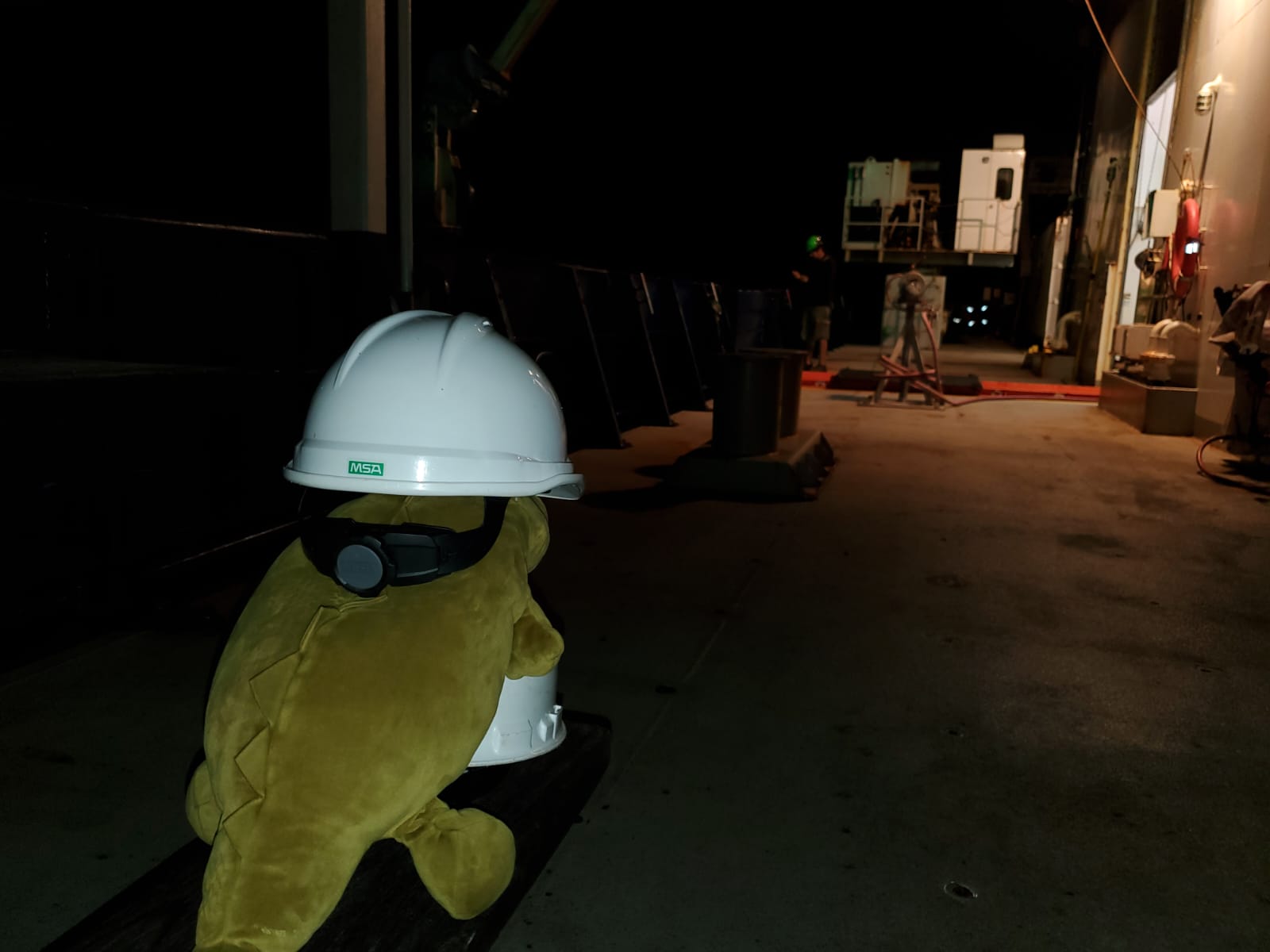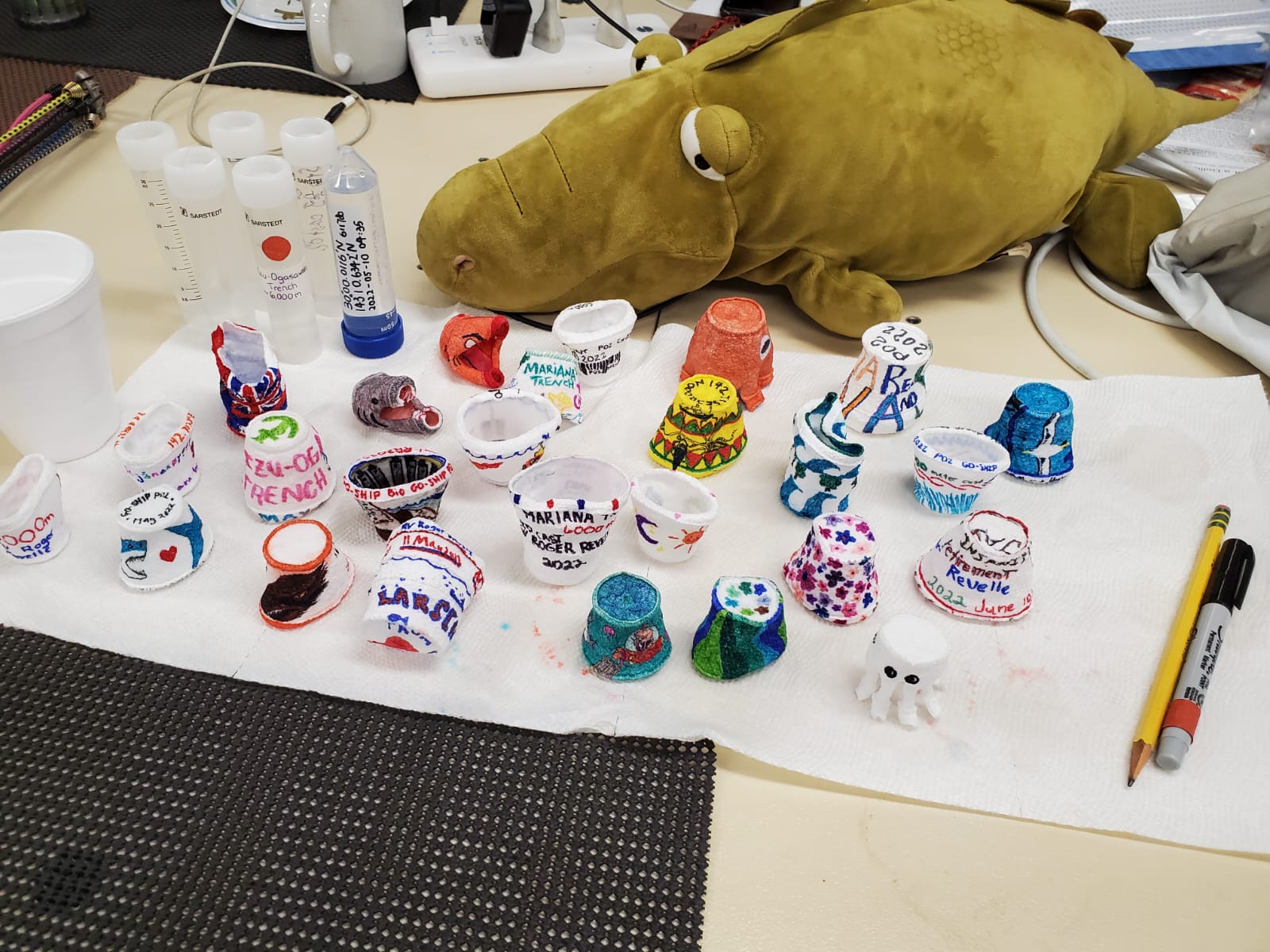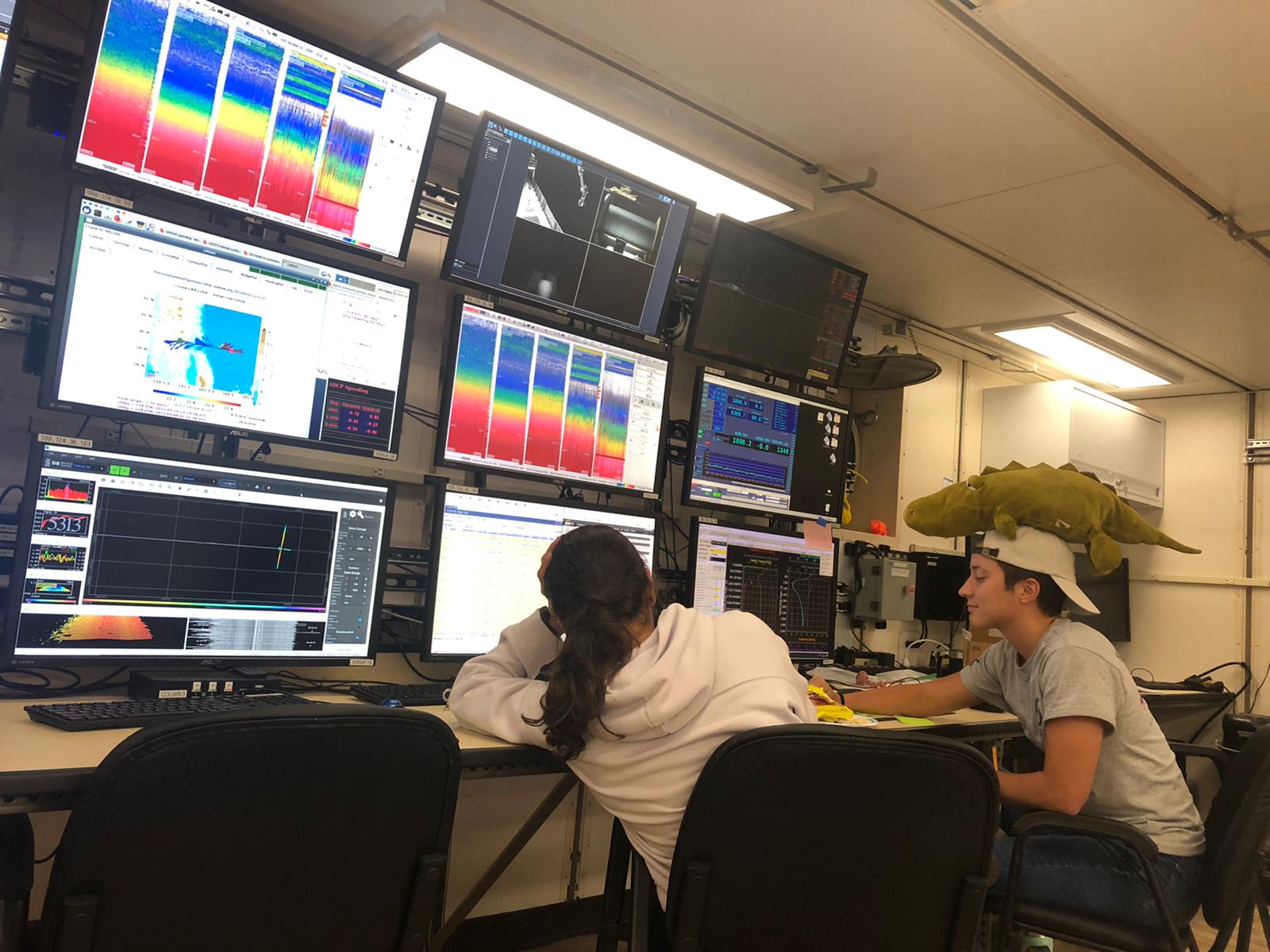GO-SHIP P02: Bring Your Crocodile to Work Day
Featuring Bill the crocodile and the day he spent with his human, Co-Chief Scientist Shuwen Tan
1 Jun 2022
By Vic Dina
What’s that? It’s bring your crocodile to work day? Say less.
Today’s blog post features Bill the crocodile and the day he spent with his human, Co-Chief Scientist Shuwen Tan, and her minion’s, CTD-Watch standers Vic and Mariana. (Note, CTD is just the shortened name for one of our instruments that measures Conductivity, Temperature, and Depth). The day’s adventures were especially fun, not only because of the reptilian companionship, but also because we visited the Izu Ogasawara Trench off the coast of Japan. The trench is nearly 10,000 meters at its deepest point, but our sampling only went to 6,000 meters (which is still nearly 4 miles deep!!). To celebrate, scientists sent down styrofoam cups which shrank from the pressure of those 6,000 meters of water they were under.
Aside from all that excitement, Bill also got to watch as the CTD Watchstanders launched the rosette with all the sampling bottles to be closed at various depths over the side of the ship. The rosette allows scientists to measure water characteristics and compare changes throughout the water column. Once the rosette is in the water and descending, it takes about 2.5 hours before it reaches 6,000 meters. Then on the way up CTD Watchstanders oversee “firing” of the sample bottles, so we have water from 36 different depths to compare in the lab. Finally, at the surface, Bill watched as the rosette, now nearly 2,300 lbs and full of water made its way back on deck. This was just one of 5 to 6 casts the CTD team does every day (half are done by the “Day” shift and half by the “Night” shift). Bill was pretty tuckered out and ready to snuggle with his human tonight- that’s for sure!

Bill looking at the various screens the CTD Team watches while the rosette is in the water. Photo by Vic Dina

Bill watching the ship crew bring the rosette back on board, safety first though! As you can see even the “Day” shift works when it’s dark. Photo by Vic Dina


